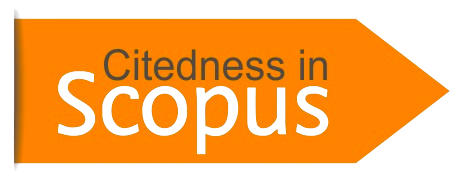Self Disclosure dan Tingkat Stres pada Mahasiswa yang sedang Mengerjakan Skripsi
DOI:
https://doi.org/10.15575/psy.v5i1.2282Keywords:
self disclosure, stress, studentAbstract
Students often experience stress that comes from academic activities. For final-year students, finishing a thesis often become a stressor. Symptoms of stress in students are feeling tired, anxious, not eager to do the thesis. The impact is the thesis is delayed and the students chose to forget it, avoided their lecturers, complained in the social media about the difficulties encountered and ultimately delayed the study period. When experiencing stress, students share their problems to the peer group to get a solution or just to relieve his feelings, called self disclosure. This study aims to determine the influence of self disclosure on stress levels, using method of correlation with simple linear regression analysis. The measuring instrument were the Revised Self Disclosure Scale and the Student-Life Stress Inventory. The participants were 49 students of psychology UIN who are working on thesis. The results showed no influence of self disclosure toward stress levels.
References
Ables, J. L. (2013). Status, likes, and pokes: Self disclosure and motivation for using Facebook (Thesis). University of Baylor.
Abdulghani, H. M. (2008). Stress and depression among medical students: A cross sectional study at a medical college in Saudi Arabia. Pakistan Journal Medical Science, 24(1).
Rahman, A. A. (2013). Psikologi sosial. Jakarta: Rajagrafindo Persada.
Asandi, Q. R. (2010). Self disclosure pada remaja pengguna Facebook (Skripsi). UIN Sunan Ampel, Surabaya.
Devito, J. A. (2011). Komunikasi antar manusia (ed. 5). Tangerang Selatan: Karisma Publishing Group.
Fadillah, A. E. R. (2013). Stres dan motivasi belajar pada mahasiswa psikologi Universitas Mulawarman yang sedang menyusun skripsi. Ejournal Psikologi Universitas Mulawarman, 1(3).
Farihah, F. (2014). Pengaruh self efficacy terhadap stres mahasiswa angkatan 2010 yang menyusun skripsi fakultas psikologi UIN Maulana Malik Ibrahim Malang (Skripsi). UIN Maulana Malik Ibrahim, Malang.
Gainau, M. B. (2009). Keterbukaan diri (self disclosure) siswa dalam perspektif budaya dan implikasinya bagi konseling. Jurnal Penelitian Ilmiah Widya Warta, 3(1).
Goff, A. M. (2009). Stressors, academic, performance, and learned, resourfullness in baccalaureate nursing students (Disertasi). University of Carolina.
Gunawati, R. (2006). Hubungan antara efektivitas komunikasi mahasiswa dengan dosen pembimbing utama skripsi. Jurnal Psikologi Universitas Diponegoro, 3(2).
Juniartha, G. N. Hubungan antara harga diri dengan tingkat stres napi wanita di Lapas Kelas II Denpasar. Jurnal. Universitas Udayana.
Rini, Kartika, & Qurroyzhin. (2007). Hubungan antara keterbukaan diri dengan kebahagiaan pernikahan pada pria dewasa awal (Skripsi). Gunadarma University.
Larasaty, R. (2012). Hubungan tingkat stres dengan sleep paralysis pada mahasiswa FIK UI angkatan 2008 (Skripsi). Fakultas Keperawatan, Universitas Indonesia.
Lazarus, R. S., & Folkman, S. (1984). Stress, appraisal, and coping. New York: Springer Publishing Company.
Nurdin, Z. (2016). Hubungan regulasi emosi dengan tingkat stres pada mahasiswa tingkat akhir pendidikan dokter fakultas kedokteran Universitas Syiah Kuala Banda Aceh (Skripsi). Universitas Syiah Kuala, Banda Aceh.
Pamuncak, D. (2011). Pengaruh tipe kepribadian terhadap self disclosure pengguna Facebook (Skripsi). UIN Syarif Hidayatullah, Jakarta.
Parker, G. R., & Parrot, R. (1995). Patterns of self disclosure across social support networks: Elderly, middle-aged, and young adults. The International Journal of Aging and Human Development, 41, 281-297.
Rime, B. (2016). Self disclosure. Dalam H. S. Friedman (Ed.), Encyclopedia of Mental Health (ed. 2, vol. 4) (pp. 66-74). Waltham, MA: Academic Press.
Rini, K., & Qurroyzhin. (2007). Hubungan antara keterbukaan diri dengan kebahagiaan pernikahan pada pria dewasa awal (Skripsi). Gunadarma University.
Safaria, T., & Saputra, N. E. (2009). Managemen emosi. Jakarta: PT Bumi Aksara.
Santrock, J. W. (2006). Adolescence perkembangan remaja. Jakarta: Penerbit Erlangga.
Sarafino, E. P. (1994). Health psychology: Biopsychososial interactions.
Septiani, E. (2013). Hubungan antara tingkat stres dengan gaya humor pada mahasiswa (Skripsi). UIN SGD Bandung.
Sugiyono. (2012). Metode penelitian kuantitatif kualitatif dan R & D. Bandung: Alfabeta.
Suryaningsih. Hubungan self disclosure dengan stres pada remaja siswa SMP Negeri 8 Surakarta. Jurnal. Universitas Sebelas Maret.
Wei, M., Russel, D. W., & Zakalik, R. A. (2005). Adult attachment, social self efficccy, self disclosure, loneliness, and subsequent depression for freshman colege student: A longnitudinal study. Journal of Counseling Psychology, 52(4).
Wheeless, L. R., Nesser, K., & Mccroskey, J. C. (1986). The relationships of self-disclosure and disclosiveness to high and low communication apprehension, communication research reports. (Online) Diakses dari http://www.jamescmccroskey.com/publications/137.pdf
Wulandari, R. P. (2012). Hubungan tingkat stres dengan gangguan tidur pada mahasiswa skripsi di salah satu fakultas rumpun science-technology UI (Skripsi). Universitas Indonesia, Depok.
Zhang, R. (2017). The stress buffering effect of self disclosure on Facebook: An examination of stressfull life events, social support, and mental health among college students. Journal Computer in Humans Behaviour, 75, 527-537.
Downloads
Published
Issue
Section
Citation Check
License
The author whose published manuscript approved the following provisions:
1. The right of publication of all material published in the journal / published on the E-Journal of Psychology website is held by the editorial board with the knowledge of the author (moral right remains the author of the script).
2. The formal legal provisions for access to digital articles of this electronic journal are subject to the terms of the Creative Commons Attribution-ShareAlike license (CC BY-SA), which means that the Journal of Psychology reserves the right to save, transmit media / format, manage in database form, , maintain, and publish articles without requesting permission from the Author as long as it continues to include the name of the Author as the owner of Copyright.
3. Printed and published print and electronic manuscripts are open access for any purposes. In addition to these objectives, the editorial board shall not be liable for violations of copyright law.
Â






